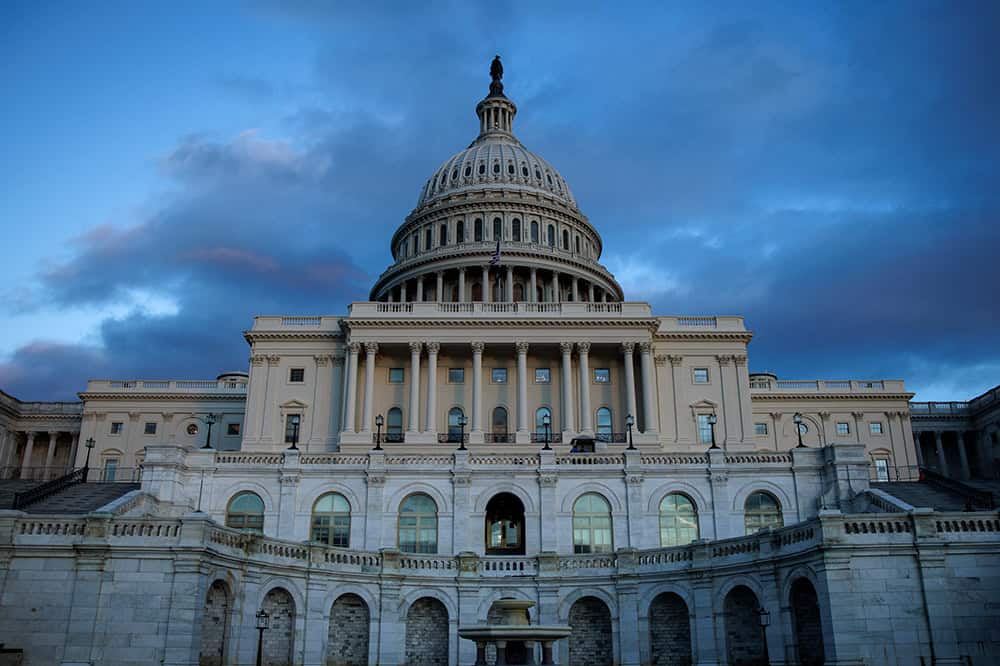Moody’s Warns Recent Policy Decisions Worsen U.S. Fiscal State, Maintains Negative Outlook Rating
Last Updated March 26, 2025
Moody’s Investor Service continues to warn that the United States is in fiscal deterioration, with a new report warning that government policy decisions in the near term could contribute to higher interest rates and worsening debt for the United States. Moody’s writes in its March 25 report: “The potential negative credit impact of sustained high tariffs, unfunded tax cuts and significant tail risks to the economy have diminished prospects that these formidable strengths will continue to offset widening fiscal deficits and declining debt affordability.”
That perspective comes after the organization lowered its outlook on the United States’ credit rating from “stable” to “negative” in November 2023. While Moody’s reaffirmed the nation’s top credit rating of AAA at the time, the negative outlook signals an increased risk of that rating being downgraded over the next few years.
The two other major credit rating agencies, Standard & Poor’s (S&P) and Fitch Ratings, have both already downgraded the nation’s rating — S&P in 2011 and Fitch in August 2023.
Moody’s stated two primary reasons for downgrading the outlook in 2023:
- Debt affordability — rising interest rates have caused the cost of financing the debt to rapidly increase. Furthermore, without policies in place to address the underlying drivers of the debt, Moody’s anticipates that federal deficits will remain very large.
- Political polarization — which will complicate the ability of policymakers to enact solutions to the nation’s fiscal challenges. Moody’s mentioned recent examples of polarization leading to an inability to govern such as the struggle of House Republicans to elect a speaker, threats of a partial government shutdown, and the political impasse around the debt ceiling debate in June 2023.
Both reasons continue to be top-of-mind for the rating organization, with its March 2025 report noting that the fiscal situation continues to decline and U.S. debt affordability is now weaker than other nations with the AAA rating. "Even in a very positive and low probability economic and financial scenario, debt affordability remains materially weaker than for other Aaa-rated and highly rated sovereigns," Moody’s states.
S&P and Fitch Ratings also recognize the misfortune of growing debt and political division for the U.S. outlook. When S&P lowered the sovereign credit rating for the United States more than a decade ago, it noted weakening “effectiveness, stability, and predictability of American policymaking and political institutions” as well as an insufficient fiscal stabilization plan for the medium-term. The recent downgrade from Fitch Ratings cited the nation’s high and rising debt, the lack of a plan to address the drivers of that debt, and the erosion of good governance.
Sovereign credit ratings assess the capacity and willingness that a borrower will default on its debt obligations. Now, all three major rating agencies have lowered their ratings or outlook for U.S. debt, and concern about the United States’ growing debt and deficits remains. These serious and credible warnings should send a strong message to policymakers about the need to address America’s unsustainable fiscal path.
Image credit: Photo by Samuel Corum/Getty Images
Further Reading
Long-Term Budget Outlook Leaves No Room for Costly Legislation
As lawmakers consider costly legislation to extend expiring tax provisions this year, CBO’s latest projections serve as a warning that our fiscal outlook is already dangerously unsustainable.
National Debt Would Skyrocket Under TCJA Extension
New analysis released from the nonpartisan CBO shows deficits doubling and debt skyrocketing under a scenario where the expiring provisions of the Tax Cuts and Jobs Act were made permanent.
Why Is the Federal Deficit High If Unemployment Is Low?
The U.S. is experiencing an unusual and concerning phenomenon — the annual deficit is high even though the unemployment rate is low.


